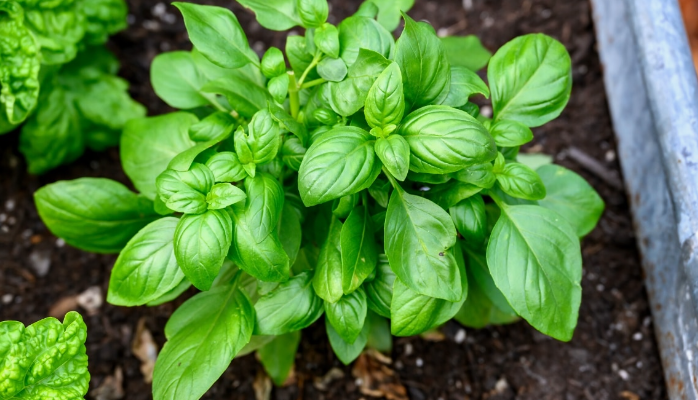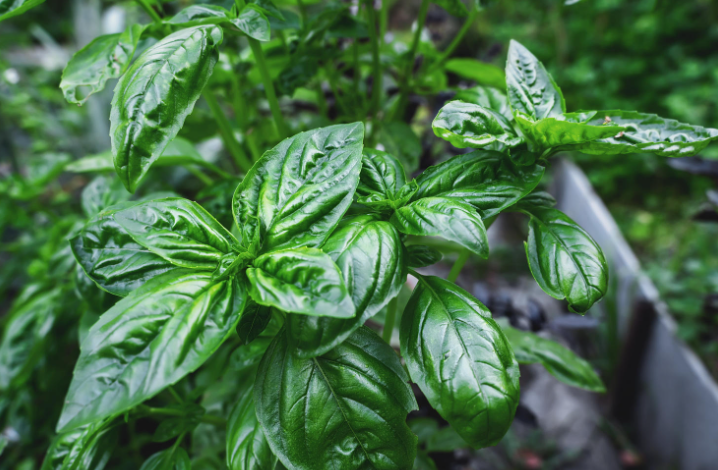What to Do With Leggy Basil? And How to Prevent It

Leggy basil plant is an aromatic and flavorful herb to add to your garden, but when its plants become tall and leggy it can become difficult to enjoy its fragrance and flavor. But fear not; basil’s presence should still be appreciated and valued in fact it should. The answer lies within your fingertips!
Leggy basil plant can still be planted in your garden and trained into an attractive, bushy herb you desire. The key to doing so lies in pruning!
What to do with leggy basil? and why is my basil so leggy? Let’s cover all of the potential reasons and remedies for how to fix leggy basil as well as how you can prune and propagate new plants from your pruning.
What Is Legginess?
A leggy basil plant develops tall stems but only produces two or three leaves per stem, as opposed to branching out more in an ever-bushier fashion as it matures. As soon as your basil has grown larger, make sure it starts spreading outwards instead of upwards!
Basil plants that become too tall will find it increasingly difficult to remain upright, eventually toppling over due to thin and weak stems. Should these snap, your plant could become irreparably damaged and may even perish completely.
Weak stems cannot support the weight of water. After experiencing heavy rainfall, you may find your leggy basil plants are either drooping or have even fallen over completely. In order to restore their condition as quickly as possible, it’s best to water close to their soil source as much as possible.
Reasons Why Is My Basil So Leggy?
What to do with leggy basil? There could be several causes for why your basil plants have become leggy; all can be easily solved.
Basil requires between six to eight hours of sunlight every day in order to thrive, which should not present an issue for gardeners unless your garden is heavily shaded.
Many of us, myself included, enjoy growing basil inside our homes; unfortunately this can often lead to insufficient sunlight reaching your basil plants.
Your indoor basil plants might not receive enough light without access to direct south light; therefore, moving it outdoors could help ensure they get enough sun. When planting in containers, be sure to move it throughout the day in order to remain under direct sun light.
1. Too Much Fertilizer
Too much nitrogen-based fertilizers could also be contributing to legginess among your basil plants. When fertilizing your garden, be mindful not to overdo it as excess nutrients could also have detrimental effects on other types of plants in addition to basil.
If this occurs in your garden, it’s wise to immediately stop adding fertilizer. A soil test could help determine what its nutrient levels are; you might discover that no additional fertilizers are required as the soil itself may already be quite healthy and fertile.
2. Too Hot
In hot conditions, certain plants can “panic” and bolt. Let’s learn what to do with leggy basil?
Too much heat makes basil plants believe they are reaching the end of their lives, sending them into an overproduction frenzy and prompting rapid growth as a means to spread seed before dying off. They begin rapidly producing flowers to ensure as much seed spreads as possible before their inevitable demise.
Rapid growth over a short period can result in leggy basil plants. Also, basil that sends up flowers (known as bolting) becomes bitter in flavor and may stop producing leaves altogether for this reason it’s wise to prune off these blossoms to protect your crop and extend its lifespan.
If the temperatures rise, ensure your basil plants receive plenty of water to help cool their roots. Mulching with something such as straw can also keep soil temperatures at an optimal level.

How to Save Leggy Basil Plants?
Legginess doesn’t spell doom for your basil plants, it’s simply their way of telling you they need some assistance.
Pruning basil plants is one of the best ways to help them thrive! Pruning simply refers to trimming back parts of a plant in order to promote new growth something we want our basil to do rather than grow upwards! Pruning helps the plant achieve that.
Step One of Pruning Basil
To start pruning basil plants, the first step should be obtaining an appropriate tool. A pair of scissors or even just pinching off leaves with your fingers will work just as effectively.
Pruning basil should always begin from the top down. If you trim too low and remove large, mature leaves, your basil may never recover or its growth could be drastically stunted.
Once the top 2-4 leaves have been plucked from your plant, save them and enjoy! For stems that are quite long, cut back several inches removing only growing tips; whenever a stem is pruned back two new shoots should appear doubling your basil production!
As part of your basil plant’s ongoing care and to prevent them from turning bitter, any flowers should also be pruned off to help the plant continue growing and preserve its flavor. You can pinch or cut these off similarly as the leaves.
Keep this in mind when starting to prune your basil plants: starting pruning too early may do more harm than good and could even aggravate existing problems. At 6 inches or taller, pruning becomes effective premature pruning could do more damage than good!
Can leggy basil seedlings still be planted?
Yes, leggy basil seeds may still be planted successfully and even taken advantage of. Just plant your seedlings normally but be mindful not to cover too much of their stem or else this could cause them to rot prematurely.
If you transplant basil seedlings from indoor to outdoor environments, you may notice that their legginess has resolved itself naturally; likely as they were just in need of more sunlight to thrive.
If your seedlings reach 6 inches but still look leggy, go ahead and prune as described above, but try clipping basil with some stem left attached. These clippings can then be used to propagate new seedlings!
Remove basil cuttings of 4 to 6 inches long from your plant, placing each cutting in its own small container of water being careful only to immerse its stem, not its leaves!
Within just a few weeks, these cuttings should begin forming small white roots. Once this happens, your basil plants are ready to be transplanted; either directly into a garden bed or placed into a container for future transplanting.
Your leggy basil has now grown into even more basil plants! Propagating plants can sometimes be tricky, but I have found basil one of the easiest plants to propagate.
Takeaway!
What to do with leggy basil and tall basil plant ? It still has plenty of life left in it! Simply ensure your plants receive sufficient sunlight or grow lights, aren’t over-fertilized, and are watered regularly when temperatures increase.
If after taking these steps your tall basil plants remains leggy, consider giving it a good prune. Just don’t forget to save any cuttings you cut for propagation purposes or for eating yourself!
Ciara Konhaus

I’m Ciara and I’m a gardener and agricultural educator in zone 6b. I’ve farmed and gardened all over the Appalachian mountains and love to empower people with the tools they need to start their own gardens.
